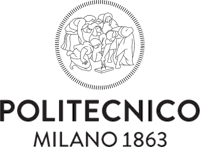Institute for Renewable Energy - Projects - IEA SHC Task 59
IEA SHC Task 59
IEA SHC Task 59 - Deep Renovation of Historic Buildings towards lowest possible energy demand and CO2 emissions (nZEB)
- Deutsch
- English
- Italiano
- Project duration: -
- Project status: finished
- Funding: Public institutions (Other projects /Project)0
- Website: http://task59.iea-shc.org/
- Institute: Institute for Renewable Energy
The project has the aim to promote the energy retrofit of historic buildings – as an important step to realize the huge potential for solar based renovation of the existing building stock.
Historic buildings make up a considerable part of our building stock und both to reach climate change mitigation targets and to preserve this important part of our cultural identity, we need to find conservation compatible energy retrofit approaches and solutions. The paradigm shift observed in the last 10 years – from “don’t touch these buildings” to “let’s find the right solutions together” – makes now a good moment to bring expertise on international level together, to join experiences from national projects and bring research and solution finding a step forward.
The project has the aim to promote the energy retrofit of historic buildings – as an important step to realize the huge potential for solar based renovation of the existing building stock.
Historic buildings make up a considerable part of our building stock und both to reach climate change mitigation targets and to preserve this important part of our cultural identity, we need to find conservation compatible energy retrofit approaches and solutions. The paradigm shift observed in the last 10 years – from “don’t touch these buildings” to “let’s find the right solutions together” – makes now a good moment to bring expertise on international level together, to join experiences from national projects and bring research and solution finding a step forward.
The new Task has been launched within the Solar Heating and Cooling Programme of the International Energy Agency as an initiative of the IEA SHC Task 37 and Task 47 consortia (who had worked on energy retrofit of residential resp. not residential buildings) and EURAC took over the coordination of the new Task proposal and is now operating agent. With the IEA SHC ExCo meeting in Spring 2016 the concept paper of the Task proposal was accepted and Task definition phase started, with the ExCo’s decision in Spring 2017 the project work plan and Annex were accepted and the project start in Autumn 2017 kicked off.
The structure of the Task includes (A) a Knowledge Base with the collection and assessment of Best Practice, (B) the Multidisciplinary planning process with the identification of replicable procedures on how experts can work together with integrated design to maintain both the expression of the building, and at the same time make it energy efficient, (C) Conservation compatible retrofit solutions and (D) Demonstration and dissemination
Main activities in 2017 were the final definition of the work plan and the Kick-Off of the Task in Autumn 2017 in Edinburgh. In 2018 the work on the single Subtask will start – for EURAC with inputs from projects like the hBATec, PLANfenster and LowTech as well as the Hygrothermal lab . Highlights will will be the spring meeting in Bozen and the autumn meeting on Gotland in accordance with the EEHB 2018 conference
Historic buildings make up a considerable part of our building stock (one fourth for Europe). They are the trademark of numerous cities, and they will only survive if maintained as a living space. This means, that in order to save this heritage for future generations, we need to find conservation compatible energy retrofit approaches and solutions, which allow to preserve the historic and aesthetic values while increasing comfort, lowering energy bills and minimizing environmental impact.
In the last 10 years a shift in paradigm could be observed: While in times of the first EPBD, a strong opposition from conservators and architects could be observed – “don’t touch these buildings” – there is growing a new openness, a much more constructive approach – “let’s find the right solutions together”. Examples for this development are last but not least the installation of the International Scientific Committee on Energy and Sustainability within ICOMOS and the development of “Guidelines for improving the energy performance of historic buildings” (EN16883) by the CEN TC 346 on Conservation of Cultural Heritage.Now is an important moment to identify and promote good approaches and solutions.
Realised examples show that a reduction of “Factor 4” (i.e. reduce the energy demand by 75%) and beyond is possible also in historic buildings preserving their heritage value – depending however on the specific case. While defining a minimum performance as for “standard” buildings does not make sense, when looking at the specific building, the design team should not “stop thinking” too early! A considerable reduction in demand – also thanks to optimisation of passive solar use – opens up the possibility to go with active solar contribution towards nZEB.
The Objectives of the Task are to
- Develop a solid knowledge base on how to save energy in renovation of historic and protected buildings in a cost efficient way.
- Identify the energy saving potential for protected and historic buildings according to typologies of building studied (residential, administrative, cultural…)
- Identify and assess replicable procedures on how experts can work together with integrated design to maintain both the heritage value of the building and at the same time make it energy efficient
- Identify and further develop tools which support this procedure and its single steps
- Identify and assess conservation compatible retrofit solutions in a “whole building perspective”
- Identify specifically the potential for the use of solar energy (passive and active, heating, cooling and electricity) and promote best practice solutions
- Transfer knowledge
To reach these objectives IEA SHC will collaborate with the IEA EBC at a “Medium Level Collaboration”, and with the IEA PVPS at a “Minimum Level Collaboration”.
The Task is structured in the following SubTasks:
-
SubTask A. Knowledge Base
Collection of Best Practice cases, following the approach of IEA SHC Task 37 and 47. Assessment of existing experience and identification of the energy saving potential. Special focus also on the decision context (why go for innovative solutions?) as well as monitoring and evaluation data. Subtask A will build on results from national and international research and demonstration projects, such as 3ENCULT, EFFESUS, RIBUILD, 4RinEU, “Gründerzeit mit Zukunft”, “Spara och Bevara” a.o. -
SubTask B. Multidisciplinary planning process
Identifcation of replicable procedures on how experts can work together to maintain both the expression of the building, and at the same time make it more energy efficient. Identification and further development of tools which support the process and its single steps.
Starting from the procedure for selecting measures as presented in EN 16883 (Conservation of cultural heritage — Guidelines for improving the energy performance of historic buildings) it identifies the needs for support and tools beyond what the standard offers, for example on documentation and life cycle assessment, and aims to provide the end users with an integrated design platform -
SubTask C. Conservation compatible retrofit solutions and strategies
Identification of replicable solutions from case studies. Connection to and integration of ongoing R&D on conservation compatible retrofit solutions. Assessment of technical solutions from both energy and conservation point of view. Focus especially on (i) window solutions, (ii) internal insulation (hygrothermal performance and key indicators like drying potential), (iii) Building services and HVAC (with focus on ventilation with enhanced cascade systems and active overflow principle) and (iv) integrated solar systems. -
SubTask D. Knowledge transfer and dissemination
Expert workshops (possibly with participation of observers) on different themes in conjunction with the six-monthly expert meetings; Workshops for Professionals series linked to the expert meetings and relevant conferences (EEHB 2018, Docomomo 2018, ICOMOS 2019, EEHB 2020 etc.); Info slots at stakeholder events – presenting the Task’s results and bringing back stakeholders’ feedback to the expert group; Touring exhibition where visual presentation material will be used by all partners in the diverse events they are organising or participating in. A Task website will be developed, to provide information on the Task and its objectives, but especially on results and upcoming events. To keep the interest in the Task high, regularly news pieces and audio-visual contribution are uploaded and distributed via the SHC newsletter.
Lucchi E, Buda A (2022)
Elsevier BV
Journal article
Renewable and Sustainable Energy Reviews
More information: http://dx.doi.org/10.1016/j.rser.2022.112324
Buda A, Gori V, de Place Hansen EJ, López S. Polo C, Marincioni V, Giancola E, Vernimme N, Eguisquiza A, Haas F, Herrera-Avellanosa D (2022)
Elsevier BV
Journal article
Journal of Cultural Heritage
More information: http://dx.doi.org/10.1016/j.culher.2022.07.002
Polo López CS, Bettini A M, Khoja A, Davis A M, Hatt T, Braun M, Kristan M, Podgornik J, Haas F (2021)
Conference proceedings article
Conference: SBE21 - Sustainable Built Heritage | online | 14.4.2021 - 16.4.2021
More information: https://iopscience.iop.org/article/10.1088/1755-1315/863/1/0 ...
Durante A, Lucchi E, Maturi L (2021)
Conference proceedings article
Conference: SBE21 - Sustainable Built Heritage | online | 14.4.2021 - 16.4.2021
More information: https://sbe21heritage.eurac.edu/paper-620835/
Peluchetti A, Guazzi G, Lucchi E, Dall’Orto I, Polo López CS (2021)
Conference proceedings article
Conference: SBE21 - Sustainable Built Heritage | online | 14.4.2021 - 16.4.2021
More information: https://sbe21heritage.eurac.edu/paper-243315/
Haas F (2021)
Presentation/Speech
Conference: SuHRF Symposium - Energy Transition in Heritage Contexts | online | 1.12.2021 - 1.12.2021
Troi A (2021)
Journal article
Südtiroler Landwirt
Haas F, Exner D, Herrera-Avellanosa D, Hüttler W, Troi A (2021)
Conference proceedings article
Conference: SBE21 - Sustainable Built Heritage | online | 14.4.2021 - 16.4.2021
More information: https://sbe21heritage.eurac.edu/paper-585117/
Troi A, Exner D, Haas F (2021)
Conference proceedings article
Conference: SBE21 - Sustainable Built Heritage | online | 14.4.2021 - 16.4.2021
More information: https://sbe21heritage.eurac.edu/paper-809608/
Rieser A, Leonardi E, Haas F, Pfluger R (2021)
Conference proceedings article
Conference: SBE21 - Sustainable Built Heritage | online | 14.4.2021 - 16.4.2021
More information: https://sbe21heritage.eurac.edu/paper-725673/
Marincioni V, Gori V, de Place Hansen EJ, Herrera-Avellanosa D, Mauri S, Giancola E, Egusquiza A, Busa A, Leonardi E, Rieser A (2021)
Journal article
Sustainability
More information: https://www.mdpi.com/2071-1050/13/4/2266
Buda A, de Place Hansen EJ, Rieser A, Giancola E, Pracchi VN, Mauri S, Marincioni V, Gori V, Fouseki K, Polo López CL, Lo Faro A, Egusquiza A, Haas F, Leonardi E, Herrera-Avellanosa D (2021)
Journal article
Sustainability
More information: https://www.mdpi.com/2071-1050/13/5/2927
Rieser A, Pfluger R, Troi A, Herrera-Avellanosa D, Engelund Thomsen K, Rose J, Arsan DA, Akkurt GG, Kompeinig G, Guyot G, Chung D (2021)
Journal article
Sustainability
More information: https://www.mdpi.com/2071-1050/13/4/2325
Herrera D (2020)
Presentation/Speech
Conference: Webinar IEA SHC Solar Academy| Renovating Historic Buildings towards Zero Energy - Task 59 | online webinar : 28.1.2020 - 28.1.2020
Andreotti M, Bottino-Leone D, Calzolari M, Davoli P, Dias Pereira L, Lucchi E, Troi A (2020)
Journal article
Energies
More information: https://www.mdpi.com/1996-1073/13/13/3362
Hao L, Herrera-Avellanosa D, Del Pero C, Troi A (2020)
Journal article
Sustainability
More information: https://www.mdpi.com/2071-1050/12/18/7557
Akkurt GG, Aste N, Borderon J, Buda A, Calzolari M, Chung D, Costanzo V, Del Pero C, Evola G, Huerto-Cardenas HE, Leonforte F, Lo Faro A, Lucchi E, Marletta L, Nocera F, Pracchi V, Turhan C (2020)
Journal article
Renewable and Sustainable Energy Reviews
More information: https://www.sciencedirect.com/science/article/pii/S136403211 ...




